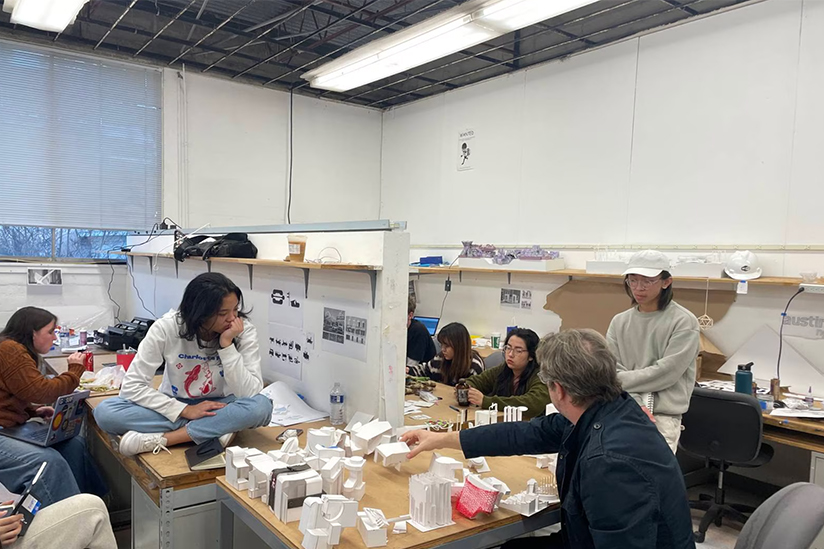The semester-long project encourages students to design sustainable structures for the city while retaining the spirit of Los Angeles.
The afternoon sun gleams across the corridor of Harris Hall, home to USC’s School of Architecture, where a drawing board presents images of the Hollywood sign, the iconic Randy’s Donut, numerous buildings in the Spanish revival style, freeways and more. Words like “connection,” “extravagant,” “diversity,” and “wood” have been jolted alongside in black ink. To 75 second-year architecture students who have been challenged to design sustainable and community-centric infrastructure for the LA 2028 Olympics and Paralympic games, these are the ideas that paint a vibrant picture of the City of Angels.
Titled “Making LA,” the semester-long project aims to have each student answer what the city means to them and design sustainable structures for the city, from concession stands and media centres to stadiums.
“With this project, we are asking students to look at the LA 2028 Olympics and specifically, the afterlife of it,” said Juan Salazar, one of the advisors for the project. “More often than not, when the games are over, all the investment that went into [the city] is lost. If we think about the Olympics games in Athens, Greece, all the stadiums are pretty much abandoned.”
The 2028 games mark the third time that LA hosts the Olympic games, having previously been the host in 1984 and 1932. The city has laid out multiple initiatives for LA2028 including rehabilitating existing stadiums, using UCLA as the Olympic Village, and expanding the public transportation network in the city.
“We need structures that can actually benefit the community that it takes place within,” said Mira Singh, one of the students involved in the project.
Many students are excited for the extension of the Purple Line that will connect Downtown Los Angeles to the Miracle Mile, Beverly Hills, and Westwood, which would reduce the travel time between DTLA and Westwood to just 25 minutes. The city’s aggressive push for sustainable building and development for the LA2028 games lay the foundation for the framework of the Making LA project.
Over the weeks, the students’ designs have matured into a wide range of forms which all exhibit their individual take on building for disassembly, reuse, and adaptability.
Tianyu Guo works with strictly slanted, parallel surfaces, but breaks this rule to create a highly sculptural space where people can walk up, sit around and enjoy some boba drinks. Her work aims to create a sense of “interaction,” where all the elements of the building are connected to how people intend to use it. “The Olympics aim to bring all the people together. The temporary architecture for the Olympics also needs to do so,” Guo said.
